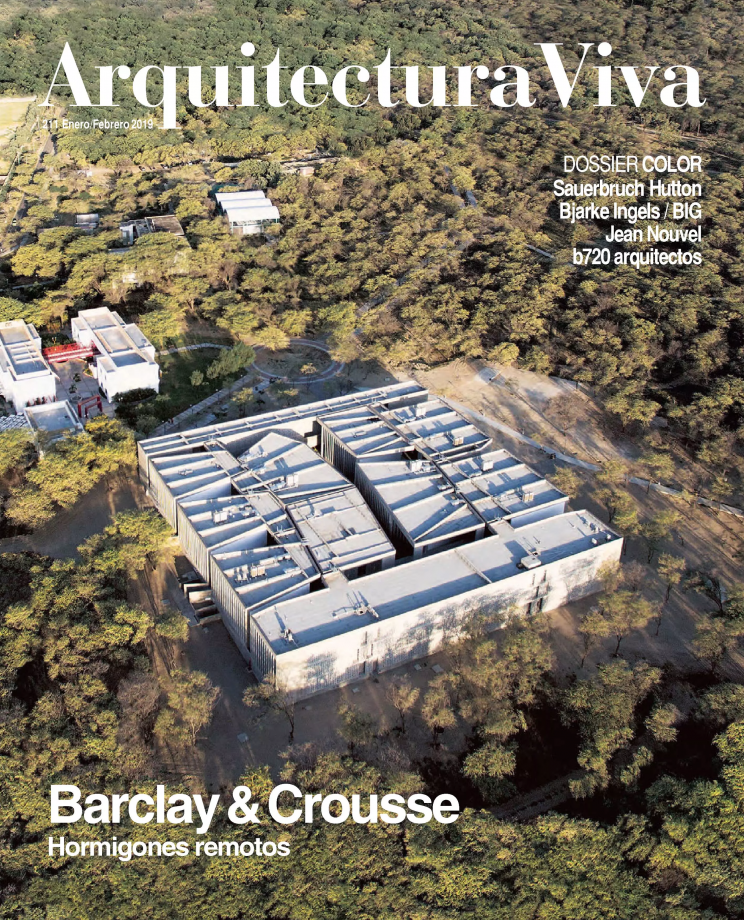
It is often said that “a picture is worth a thousand words.” In general terms, I do not believe this to be true. Nevertheless, there are concrete cases in which the aphorism does ring true. I am referring here to the dazzling, expensive, extravagant, and deceiving model that has tried to synthesize the latest municipal proposal for the execution of ‘Operación Chamartín,’ rechristened ‘Madrid Nuevo Norte.’
Widely disseminated through the press, television, and advertising fliers of Distrito Castellana Norte (BBVA and Constructora San José), the model served as a visible reference for the silly victorious discourses of the protagonists of the presentation, where to the astonishment and envy of global cities, it was announced that this real estate operation – stalled for a period of twenty-five years and reactivated by the current city government – will now for certain be going ahead, thanks to an agreement reached between public administrations and the banking community. A consensus deaf to the voice and interests of many Madrid citizens, especially those living close by.
If we manage to squint our eyes so that the glare and glitter of this fake model does not blind us, and if we set out to analyze it, even though only superficially, what we will find is that, underneath the cluster of pink, blue, purple, and green lollipops, there is nothing that demonstrates a minimal knowledge of urbanistic culture, nothing that results from a proper disciplinary effort. Nothing that isn’t plain deception. With a bit of imagination we can discern the design method behind this ‘urbanistic’ proposal: take a basin for giant 3D-printed dice; put in a high-tech tower, as tall as possible, then several towers of more modest scale, expressionist or postmodern; add some supposedly rationalist blocks, then a few volumes to insinuate facilities and amenities; pour the content onto a green baize, evoking a vast meadow dotted with groves and flower beds, with well-fed gleeful children running around, bikini-clad young blondes sunbathing, executives garbed in smart suits rushing to and fro, and retired senior couples taking a leisurely stroll, proprietors of thick portfolios. The icing of this gigantic cake is a new central park, where trees of “up to 26 meters,” according to one of its staunch defenders, are nourished and held upright by sinking their roots into the hard dry concrete of an enormous, expensive, and unnecessary slab built over railway installations. Keep cars out. Only bikes allowed. Hush all noise. Eliminate the brownish gray of pollution. This will be the new Madrid.
The foregoing may sound like a frivolous joke. However, if the model represents an urban project, it merits no further reflection, but renewed condemnation of the by now historical Chamartín operation. This time, condemnation of the disciplinary weakness with which it has been formulated. And also of the perversion of using public land for the gains of private business, or to sanitize the depleted coffers of ill-managed public administrations, which amounts to a shameful disentailment.
The major financial organizations linked to the real estate world and city construction, whether here or in Singapore, Panama, London, Shanghai, or New York, know only too well that at least on paper, big business involves carrying out large-scale building operations in highly strategic areas of the world’s great global cities, backed by the approval, the support, and the participation of local, regional, and national governments that will ultimately bear the brunt of losses incurred by their private partners once the lights and sounds of inauguration ceremonies fade out all too soon. Beware: La Défense in Paris and the Docklands of London should long ago have served as warnings.





